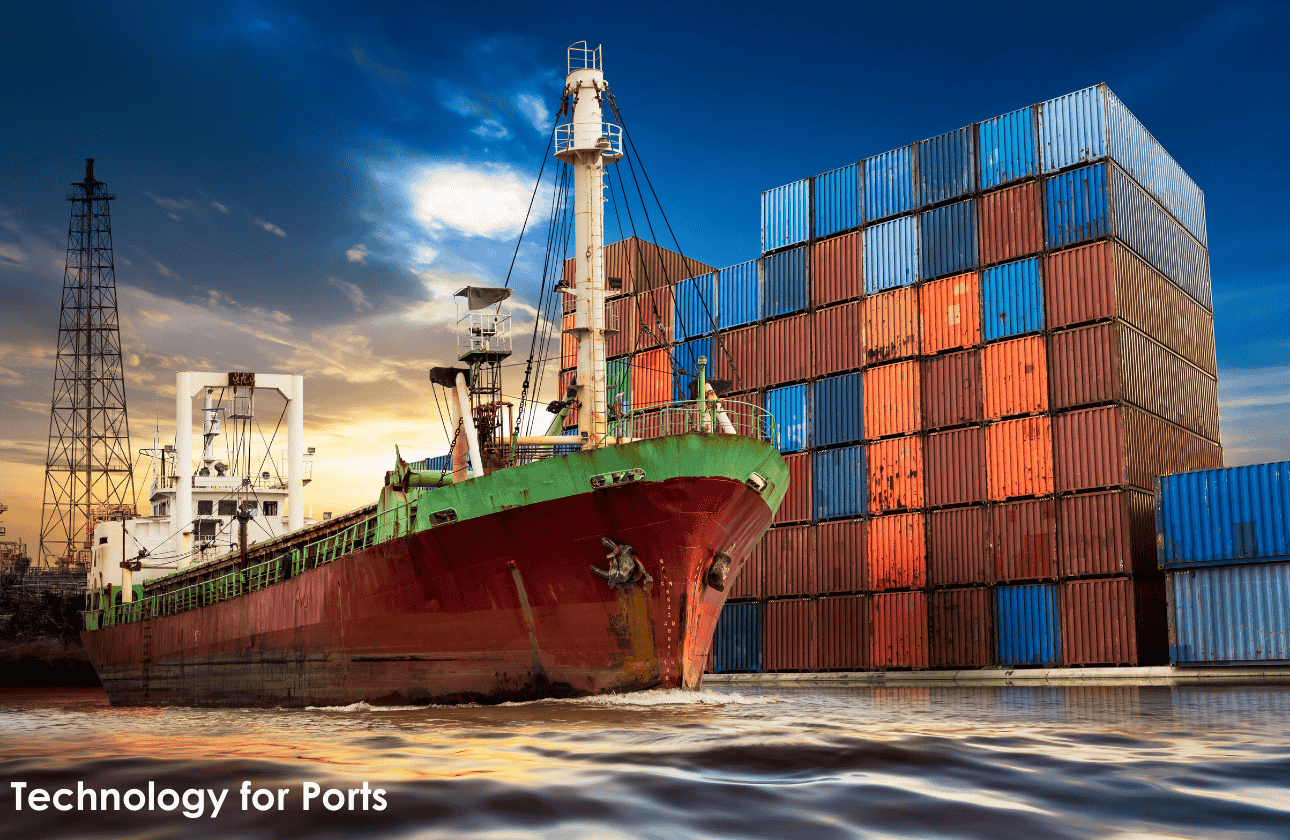The Technical Backbone: IoT and AI in Ports
IoT in Ports:
- Smart Containers: Equipped with IoT sensors, smart containers transmit real-time data on location, temperature, humidity, and other parameters. This data is crucial for ensuring the safety and security of cargo during transit.
- Automated Cranes and Vehicles: IoT-enabled equipment, such as cranes and automated guided vehicles (AGVs), communicate with central control systems, improving coordination and reducing human intervention.
- Environmental Monitoring: IoT devices monitor air and water quality, noise levels, and energy consumption, helping ports meet environmental goals and comply with regulations.
AI in Ports:
- Predictive Maintenance: AI algorithms analyze data from IoT sensors to predict equipment failures before they happen, reducing downtime and maintenance costs.
- Optimized Operations: AI optimizes cargo handling processes, reducing wait times and improving overall efficiency.
- Security Enhancements: AI-driven systems detect and respond to security threats in real-time, ensuring the safety of port operations.
Humanizing the Impact: Real-World Applications
Imagine a bustling port where every container is a node in a vast network, constantly communicating its status to a central system. This isn't science fiction; it's the reality of modern ports equipped with IoT and AI technologies. For instance, the Port of Hamburg uses an IoT platform to manage traffic congestion, pollution, and road safety. This system tracks barges using RFID tags, providing real-time information that helps streamline operations and reduce delays.
In the logistics sector, AI-powered robots in warehouses move products more efficiently, reducing the time it takes to fulfill orders. Real-time shipment tracking ensures that sensitive goods, like pharmaceuticals, are monitored throughout their journey, maintaining the required temperature and humidity levels.
The Human Touch: Empowering Workers and Enhancing Safety
While technology plays a crucial role, it's the human element that brings these innovations to life. Workers in ports and logistics companies are now equipped with tools that make their jobs safer and more efficient. For example, AI-driven systems can alert workers to potential hazards, reducing the risk of accidents. IoT devices provide real-time data that helps workers make informed decisions quickly.
The integration of IoT and AI in the ports and logistics industry is not just about technology; it's about creating a safer, more efficient, and more sustainable environment for everyone involved. By leveraging these advanced technologies, ports and logistics companies can enhance their operations, reduce costs, and improve the overall experience for workers and customers alike.




Comments (0)